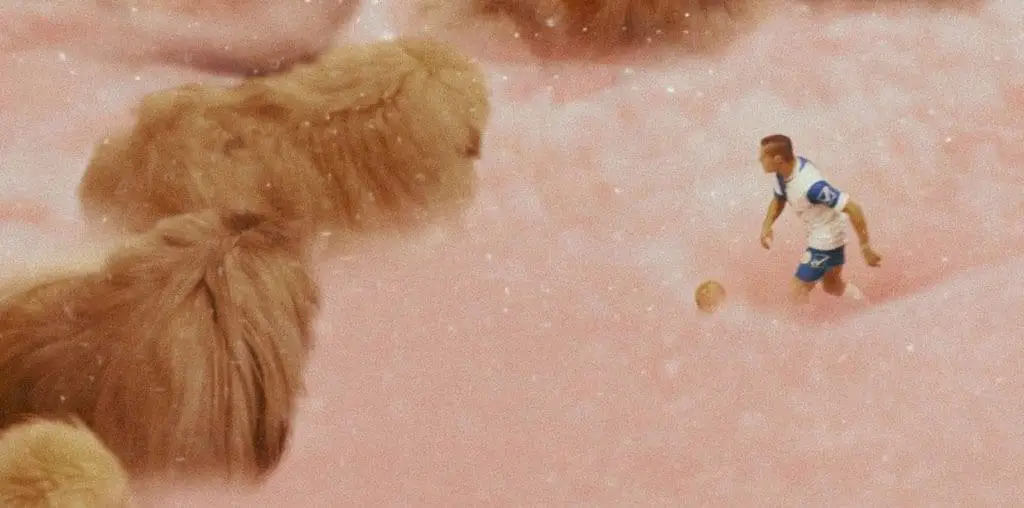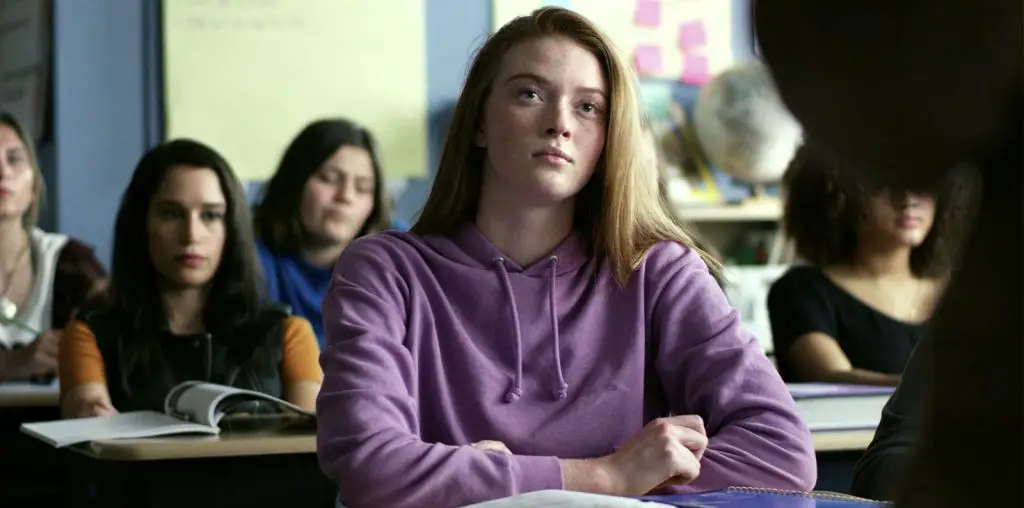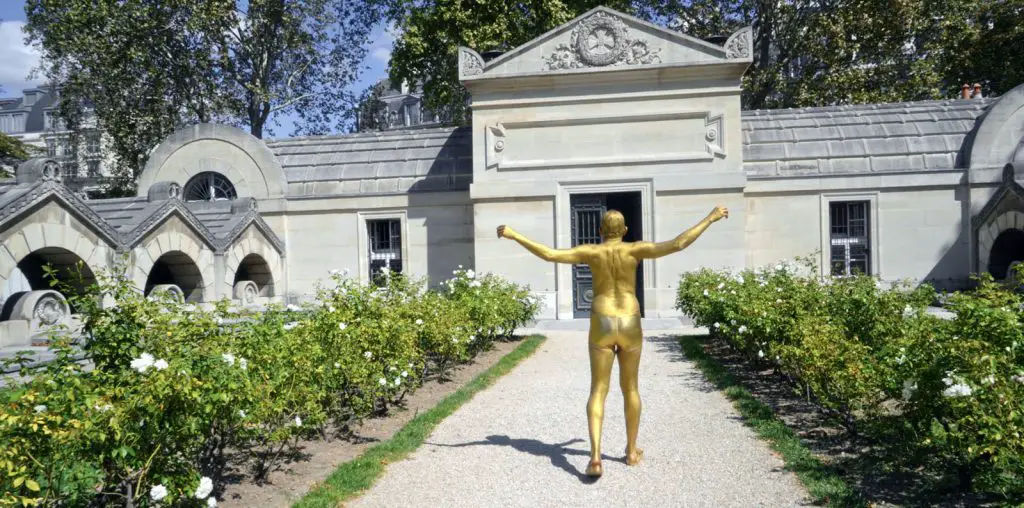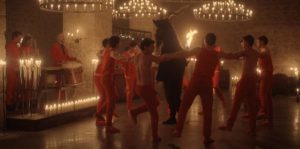
NEW YORK FILM FESTIVAL 2020 REVIEW! I have never seen another film by Eugene Green for reference, but if Atarrabi & Mikelats is any indication as to what his style usually is, then I want to see all the other films he’s done. Atarrabi & Mikelats is one of the more unique mythologies I have ever encountered. I think anyone fascinated by theology and mythology will be endlessly fascinated by this film.
The goddess, Mari, visits a mortal man one evening for the purpose of having him sire her children. Mari has two young boys accompanying her in front of the entrance to a cave in the next scene. A man comes out who turns out to be Satan or “le diable” for these purposes (Thierry Biscary). Mari asks him to raise her children because “she has no maternal instinct.” So the devil agrees to raise her sons, born minutes apart, the older one is named Atarrabi, and the younger one is Mikelats. The two boys live in the devil’s palace, and then we see they have reached young adulthood. Atarrabi (Saia Hiriart) wants to leave the palace, while Mikelats enjoys living there and hanging out with their demon roommates. Atarrabi pleads with the devil to leave the palace, and he says that because he raised them, the two boys owe him everything. He puts Atarrabi in place as a domestic servant. Eventually, he escapes because a talking sieve helps him get away (it’s that kind of movie). Mikelats takes an oath of loyalty to Satan, so he is set on an upwardly mobile track in hell, while Atarrabi tries hard to become a monk at a monastery in a neighboring village. It turns out that Atarrabi has no shadow, which means he can’t receive the light of God. The Father Superior (Pablo Lasa) takes pity on Atarrabi and allows him to stay there. Of course, the devil stole Atarrabi’s shadow.
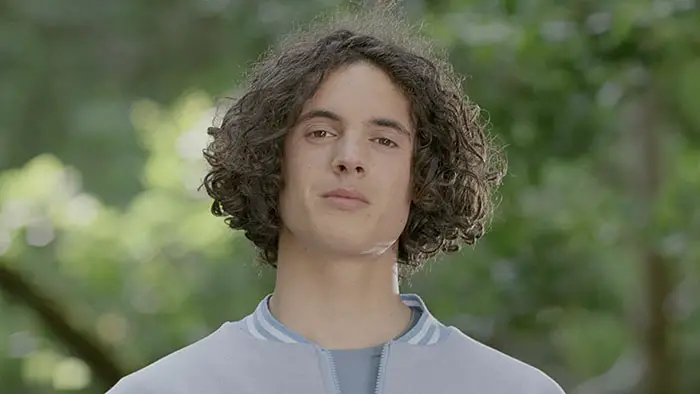
“The Father Superior takes pity on Atarrabi and allows him to stay there.”
Atarrabi & Mikelats is a wonderful fable. It feels as though it were written in ancient times. The formality in the performances also makes it seem as though it is something more than just a movie. It feels like a religious parable. There are wonderful scenes, including a dance with a goat-headed man in a suit, there are the administering and smiting of curses. There’s death, life, redemption. It’s all there. It’s a big movie that encompasses so many topics in it’s two-hour run time that I can’t get to them all in this review. Just know that Atarrabi & Mikelats is a magical film. It entrances the viewer and takes them to a place where the story unfolding could just be real.
Something is interesting about Raphael O’Byrne’s cinematography. Everyone is shot alone on screen, for the most part, so each shot is just one character saying something and then a different shot for the next speaker. It is kind of hypnotizing. Also, as I mentioned before, the delivery of speech is extremely formal. It doesn’t ever feel like anyone is having a real conversation. The film is highly stylized, and that makes it unforgettable for me. I haven’t seen anything like it, and I don’t know if I will again, until I see the next Eugene Green movie. So if you love a good fable, or I don’t know, The Bible, you will appreciate Atarrabi & Mikelats. It feels like a lost gospel. It really is a magical film like nothing else.
Atarrabi & Mikelats screened at the 2020 New York Film Festival.
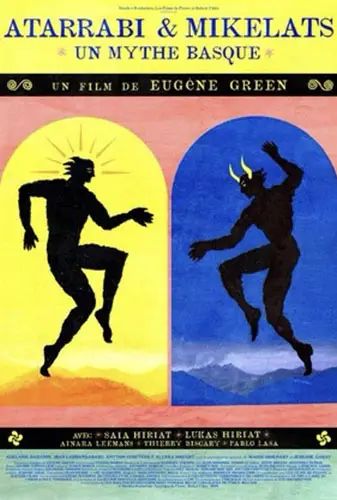
"…So the devil agrees to raise her sons"
